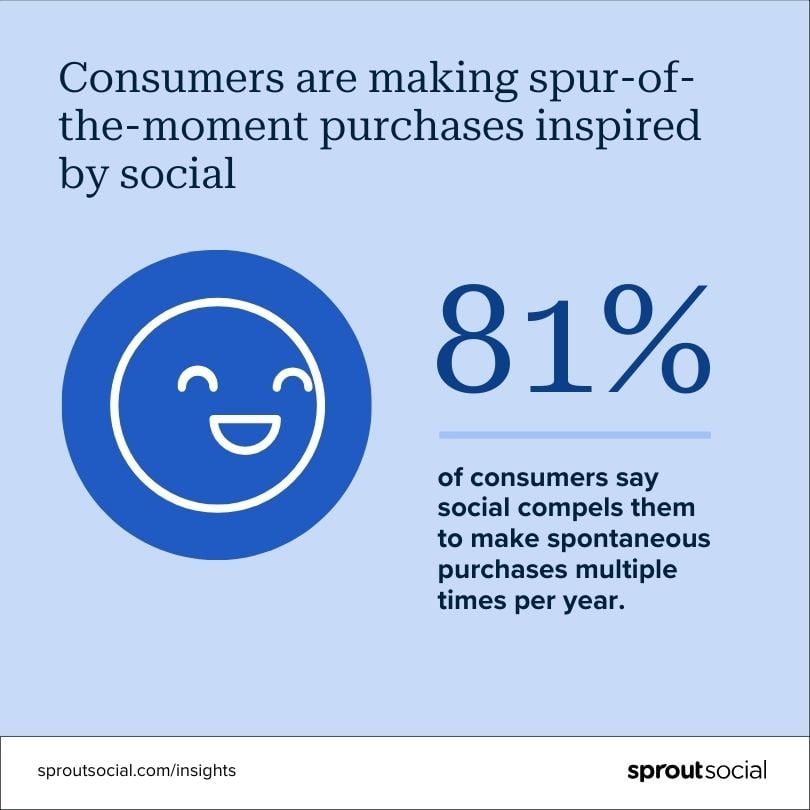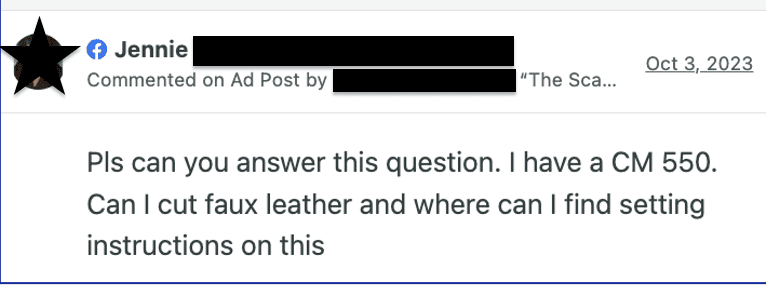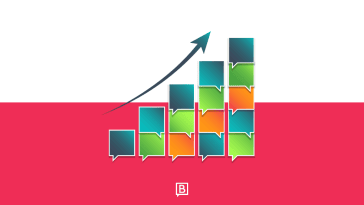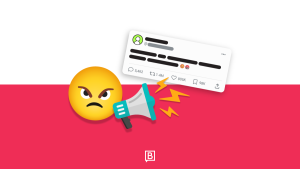Advertising is contracting. Fast.
As a result, if you’re a marketer, it means it’s time to pivot. Yes, big campaigns are getting cut. Still, your customers expect an exceptional social customer experience.
To be clear, this isn’t about flashy ads or big-budget campaigns anymore. Rather, it’s about creating meaningful connections, one response at a time.
Because even if you’re forced to hit the brakes on paid ads, your customer expectations aren’t slowing down. On the contrary, they’re accelerating. And the first place they’re looking for support? Social.
Welcome to the social customer experience revolution. (Here’s how to tackle it head on!)
The Advertising Pullback Is Just a Symptom
For starters, let’s look at what we’re seeing right now. This is not just a budget issue; it’s a behavioral shift.
Sure, on paper, it looks like a money thing. Gartner’s 2024 CMO Spend Survey shows marketing budgets have dropped to 7.7% of company revenue (down from 9.1% last year).

[Source]
And yeah, that’s a 15% cut.
Even so, if your budget is still intact (lucky you), you’re probably feeling the squeeze in a different way. In today’s climate, the pressure to prove performance is at an all-time high.
So let’s zoom out.
This isn’t just economic. It’s emotional.
Caution is creeping into every decision. From your CFO’s approval chain to your customer’s checkout screen, there’s hesitation. And beyond the dollars, this moment is about tightening trust, not just tightening belts.
Need proof?
In March 2025, U.S. consumer confidence hit a 12-year low. With inflation and tariffs dominating headlines, people are pulling back—not just their money, but their energy.
Big-ticket spending? Paused.
Brand exploration? Suspended.
So, what’s filling the gap?
Something different is rising: watchfulness. Discernment. In turn, expectations are shifting. Customers now want brands to show up meaningfully, not just loudly.
So yes, the flashy ads are fading. But underneath that? We’re staring down a full-on reset.
That’s why brands are (or should be) swapping showmanship for substance. And hopefully, they’re starting to ask the right question … not “How do we keep eyeballs?” but “How do we keep trust?”
Here’s what we’re seeing:
- Brands playing defense instead of offense
- Splashy is out. Strategic is in.
- Consumers watching how you behave—not just what you broadcast
This isn’t about TikTok CPMs. It’s about something deeper:
When advertising feels risky, connection becomes your currency.”
~ Brooke Sellas
And here’s the kicker: that kind of currency? It compounds.
Why Social Customer Experience Is the Smartest Play in a Tight Market
Let’s get real: when your ads disappear, your customers don’t. They shift. They move closer to your other channels … especially social media!
Here’s where they’re showing up:
- Ads vanish? They hit your socials with questions.
- Supply chain delays? Expect a vent sesh in your comments.
- Budget-conscious behavior? Empathy (not excuses) becomes the ask.
Bottom line: Social customer experience becomes your frontline differentiator.
Not just a “nice to have.” A revenue-saving strategy.
In fact, roughly 81% of consumers say social media compels them to make spontaneous purchases multiple times per year or more, with 28% making impulse purchases once a month.

[Source]
At B Squared Media, we helped a global brand reduce response times by 3,791%—from 20+ hours to just over 30 minutes.

[Source]
Because speed builds trust. And trust converts.
From “Push” to Presence: The New Model of CX
Traditionally, advertising is push. It’s outbound, controlled, and carefully curated.
However, at the same time, it’s shouting into the void. In essence, advertising is all about pushing a message—broadcasting a polished, controlled narrative from your brand to the masses.
By contrast, social customer experience offers inbound intimacy at scale.
Sure, it’s messy. Yes, it’s human. More importantly, it’s about presence. Unlike traditional ads, it’s inbound, it’s relational, and above all, it’s real.

[Source]
Social is where the culture happens. Period.
More than TV. More than Netflix. More than group chats with your BFFs.
Across the board, people are turning to social media to stay in the know about trends, cultural moments, and what’s really going on—regardless of generation.
So no, this isn’t just a Gen Z thing.
- Instead, it’s a behavior shift.
- Ultimately, it’s a cultural reset.
- And more importantly, it’s the SOCIAL CUSTOMER EXPERIENCE.
If staying relevant is the goal, you don’t need a commercial—you need conversational currency. After all, social is where it’s traded.
In fact, social has quietly become the new town square. Rather than passively consuming, people are shaping culture in real time. They’re not waiting on a broadcast; instead, they’re broadcasting themselves.
Naturally, they expect brands to keep up.
To be clear, your audience isn’t asking for perfection. What they really want is participation. They want conversations, not campaigns. (I mean, of course I said it again.)
In today’s climate, being present—especially on social—is the clearest signal that your brand cares.
At the same time, it’s also real-time trust-building. It’s exactly what your audience wants. And if they don’t get it? They’ll go elsewhere.
So, consider this your wake-up call:
- Provide real connection: 71% of consumers demand natural, conversational experiences. They crave real, human, unpolished exchanges.
- Speed is non-negotiable: 2 out of 3 say response time matters just as much as price.
When budgets shrink, what’s left is what can’t be bought:
- Trust
- Consistency
- Showing up
Ultimately, the brands that win in 2025 won’t be the ones that publish the most. Instead, they’ll be the ones that listen the best.
Your 2025 Social Customer Experience Checklist
Let’s be honest: if your ad dollars are down, your social customer experience equity better be way, way up.
Because this isn’t just about “being responsive.” Rather, it’s about showing up so well on social, your customers forget you ever ran ads.
So, here’s how to lead (not lag):
1) Audit your response times (then obliterate them).
These days, customers expect speed. So ask yourself: are you measuring in minutes, or hours? If it’s the latter, you’re losing trust (and revenue).
Ideally, aim for under 10 minutes if you’re the Honor Roll type. At the very least, stay under an hour if you want to be ahead of the pack.
2) Prioritize listening over publishing
Yes, scheduling posts is fine. However, if you’re not monitoring DMs, mentions, and threads like your business depends on it … then you’re not in the game.
In fact, social listening is the new publishing. That’s why it’s time to shift from content calendar to comment catcher.
While you’re at it, grab our free social listening workbook—it’s made for this moment.
[Source]
3) Turn social convos into business intel.
Let’s be clear: customer questions aren’t noise. On the contrary, they’re serious market research!
In other words, use them to shape your content strategy, product decisions, and messaging. After all, your audience is literally handing you the roadmap.
So why not use it?
4) Train for tone. Hire for heart.
Simply put, your team shouldn’t sound like robots. (And please—**for the love of CX—**stop letting bots reply without human oversight.)
Because in reality, empathy, nuance, and brand voice are your frontline differentiators. This is exactly where good brands become great ones.
5) Use social as your retention machine.
Instead of treating social as just a marketing channel, start thinking of your social CX team as the new customer loyalty squad.
Every time they solve an issue, that’s a customer you kept. And every time someone says something kind? That’s an organic review.
Forget memes—this is money.
That’s a real customer asking, “Can my machine cut leather?”
- Answer with care = keep the customer.
- Ignore it or delay too long = risk them bouncing to your competitor.
It’s that simple. Every question is a chance to build trust or break it.
In today’s economic climate, the brands that win aren’t the ones with the cleverest campaigns. They’re the ones who have a social customer experience strategy and show up when it counts. Even for questions about leather.
6) Measure what actually matters.
Don’t just track likes and shares. Track first response time, issue resolution, positive sentiment, and retention impact. These aren’t “soft” metrics! They’re survival KPIs.
This isn’t customer service dressed up for social. This is the core of your brand experience. And in 2025, it’s the difference between being remembered. Or replaced.
Lower Ad Spend Doesn’t End the Conversation
My ultimate advice? Get closer, not quieter.
When budgets shrink, most brands panic and pull back. They slash ad spend, shelve big ideas, and cross their fingers that awareness alone will carry them through.
Here’s the truth: connection is the new conversion.
You can’t outshout economic uncertainty. But you can out-support it.
- Social customer experience shouldn’t be the fallback. It’s the flex.
- Real presence? That’s earned by showing up—not shouting. Loyalty? Built in the quiet moments when someone needs help, not a headline.
- No need for speeches—your actions do the talking. What’s more, every thoughtful reply says what your audience really wants to hear: “We see you. We’ve got you.”
That isn’t customer service. That’s brand power.
Finally, while your competitors ghost their customers, you show up. While others obsess over impressions, you earn trust. When they cut visibility, you become unforgettable.
Because even in a down market, how you treat people will always outperform how you target them.
BONUS: Ready to See Where You Stand?
Start with a Social Media Mystery Shop or deep-dive into Care Squared Training. Let’s make your social media CX louder than your ads.
Latest posts by Brooke B. Sellas (See All)
- Platform-Specific Social Care: Tailoring Customer Service for Each Channel - October 8, 2025
- Social Media Engagement ROI Explained: From Comments To Conversions - October 1, 2025
- Social Care: Success Beyond Response Time - September 24, 2025

















